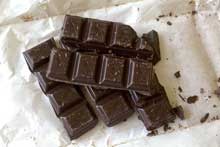Hens crave sunlight and dirt. They like each individually. In the winter, a chicken will bask in a warm ray. A hen closed up into a coop will take a dust bath in shavings. But, for a hen, nothing is more luxurious and satisfying than sunlight and dirt together.
I have two new hens (more about them in a later post!) named Philomena and Agnes. They are twenty-weeks old, and until today have never been outside. The man I bought them from on Sunday housed them indoors, warm and safe from predators. I’ve kept them inside and isolated for a couple of days to make sure they won’t bring diseases onto the property.
Today, while the older hens were outside foraging in the lawn, I let Agnes and Philomena into the yard of the big barn. They each took two steps onto the hot, dry soil and collapsed! It was quite the dramatic flop into the dirt and I imagine that a new chicken keeper would have panicked.

Here they are, in a pile of feathery ecstasy.
There’s a health reason behind this chicken “spa treatment.” Dirt worked under the feathers and rubbed onto the skin, kills external parasites. Sun bakes out diseases. My old poultry books all talk about how the “village hennery” will have healthy chickens if there is access to a clean yard and sunlight, but diseased birds if they are holed up in damp, dark quarters.
My new girls certainly don’t think about that – they simply instinctively know to sprawl out in the sun and relax.






